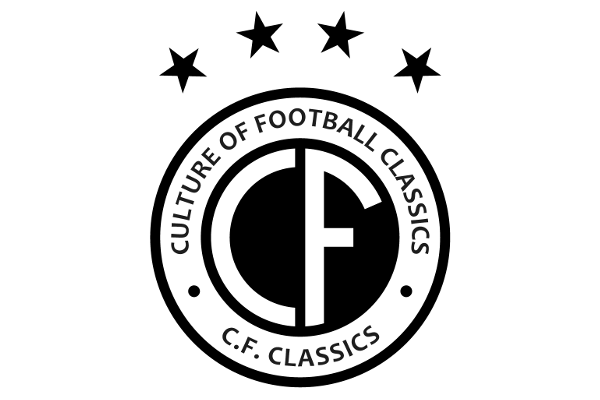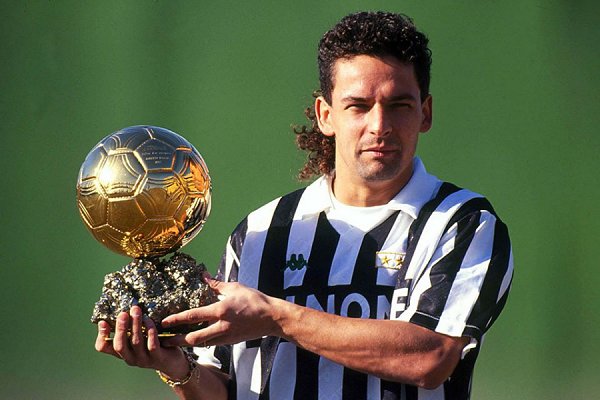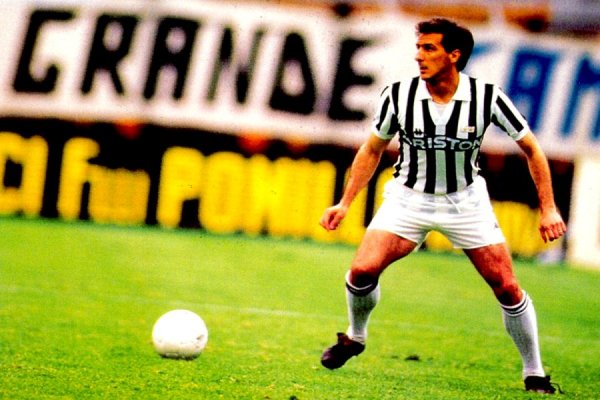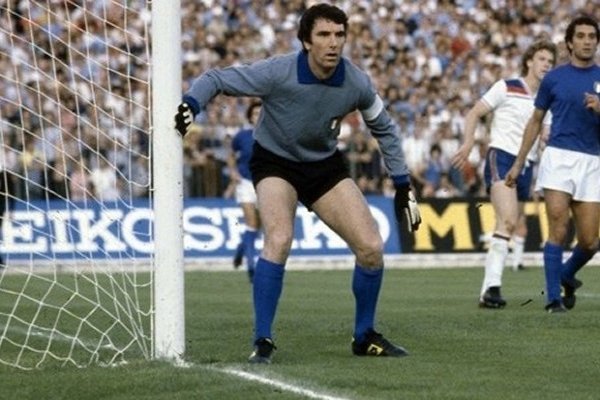The Greatest Italian Strikers of All Time
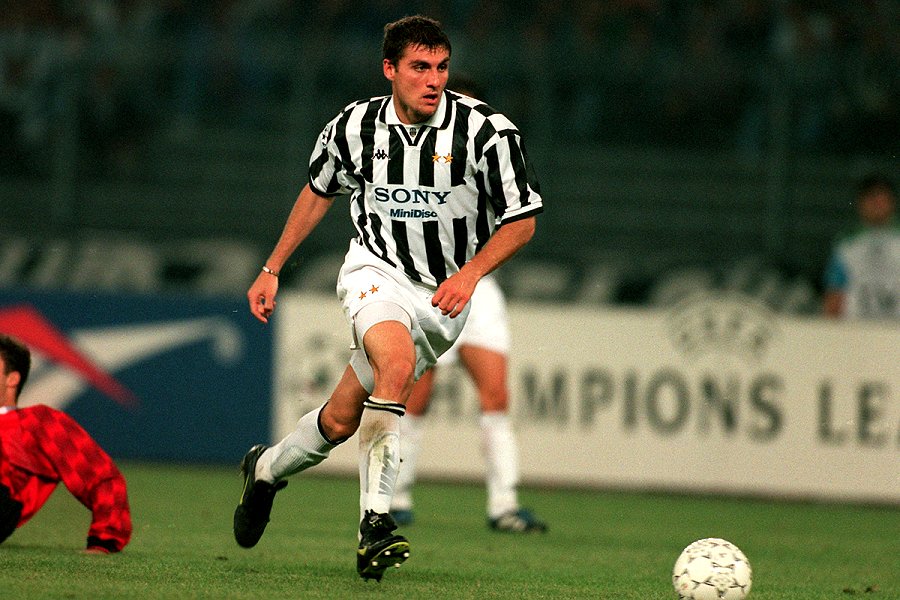
Christian Vieri - one of the greatest Italian strikers of the late 1990s and 2000s.
Photo: Wikimedia Commons.
Whilst the world of football quite rightly acknowledges Italian defenders as masters of their craft, let's not forget that at the other end of the pitch the country has provided some of the finest strikers that the game has seen. And when we say strikers, we mean number 9s, if you're after fantasistas, playmakers or number 10s, then have a look elsewhere on the C.F. Classics site.
So, here are 10 of the best, in no particular order...
No.1 Luigi Riva
A fantastic striker who is still Italy's highest ever goal scorer with 35, despite playing only 42 times for the Azzurri, an astonishing scoring rate. Only a number of serious injuries prevented Riva from playing more games and scoring even more goals. At club level he is a legend of Cagliari, playing there from 1963 until he retired in 1976, turning down the advances of the real heavyweights of Italian football to stay on Sardinia.
See also: Luigi Riva profile
No.2 Paolo Rossi
Unlike many traditional centre forwards, Paolo Rossi lacked a physical presence and had a very slight build, but he was quick off the mark, agile and had razor-sharp reactions. And as with all great poachers, Rossi had an eye for goal and a natural ability to read the game and to anticipate where best to position himself for goal scoring opportunities.
Unlike many goal poachers, Rossi actually started out as a winger, at Vicenza in the mid 1970s. It was down to a team-mate's injury that he got moved into a central position but it soon turned into something of a master-stroke - Rossi suddenly finding himself topping the scoring charts for Serie B in 1977, before doing exactly the same in Serie A the following year, 1977-78, and winning the Capocannoniere award. This domestic form saw Rossi named in the Italian squad for the Argentina '78 World Cup, an opportunity which he grabbed fully, scoring three goals and being named as the tournament's second best player, behind Mario Kempes. Four years later at Espana '82 he would go one better than this, not only being named the player of the tournament but also claiming the Golden Boot as the tournament's top scorer with six goals, three of them in that epic encounter with Brazil.
In between these two World Cup tournaments, Rossi had to actually sit out the Europa '80 European Championships, on home soil, as he'd been banned for two years as part of the Totonero match-fixing scandal. Yet despite this controversy, it's his goalscoring exploits leading the Azzurri to World Cup glory in 1982 for which he's best remembered.
See also: Paolo Rossi profile
No.3 Gianluca Vialli
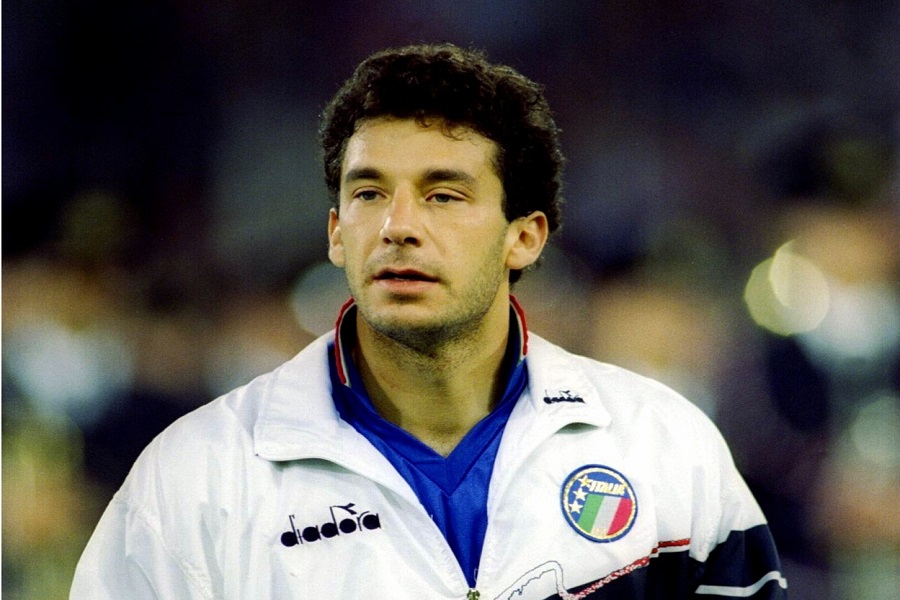
Gianluca Vialli at the Italia 90 World Cup.
Photo: Wikimedia Commons
Strong, physical and athletic, Gianluca Vialli was a great all-round forward who had a bit of everything to his game. Vialli started to make a bit of a name for himself in 1984 when he scored ten Serie B goals for his hometown club Cremonese, resulting in a move to Sampdoria. It was here that he really came to prominence, forming one of Italian football's great partnerships with Roberto Mancini, as Vialli's movement, pressing and general dynamism proved the perfect foil for Mancini's more subtle playmaking skills.
See also: Gianluca Vialli profile
No.4 Aldo Serena
He might not have the technique and skill as many of the others in this list, but Aldo Serena's strength and physicl attributes, particularly his ability in the air, made him one of the top Italian strikers of the 1980s. He played for a whole host of clubs after making his professional debut for hometown club Montebelluna in 1977, but it's his time with Juventus and Inter for which he was best known.
See also: Aldo Serena profile
No.5 Giuseppe Signori
Ninth in the list of all-time Serie A top scorers, Giuseppe Signori was one of the greatest Italian forwards of the 1990s, his goals for Foggia, Lazio and Bologna making him a household name with fans of Serie A.
Signori was both a free-kick specialist and a penalty specialist - he's one of only two players to score a hat trick of free kicks in a single Serie A match and stands fifth in the list of all-time Serie A penalty-takers. It wasn't just from deadball situations though that Signori could score, anywhere with a sight on goal was fair game for the little forward, and his signature move was to cut in from the left side and use that sweet left foot of his to find the back of the net.
See also: Giuseppe Signori profile
No.6 Paolo Pulici
A genuine Torino legend, Paolo Pulici is the next player on our list of the greatest Italian strikers of all time. The man nicknamed Puliciclone by renowned journalist Gianni Brera would play 14 seasons in Serie A for Il Toro, scoring 134 league goals and winning the Capocannoniere award three times as the Serie A's top scorer.
Pulici's tenacious style and dynamism endeared him to the fans, and his personal success with the club was topped off by a Serie A title in 1976, Torino's first Scudetto since the Grande Torino era of the 1940s. Paolo Pulici formed a renowned attacking partnership with another fine Italian forward of the era, Francesco Graziani, and the pair were nicknamed "I Gemelli del Gol" (the Goal Twins).
See also: Paolo Pulici profile
No.7 Giuseppe Savoldi
A fantastic forward who hit the headlines in 1975 when he became the world's first million pound player when he transferred from Bologna to Napoli for a world record two billion Lira. Giuseppe Savoldi had become a legend at Bologna after moving there from home town club Atalanta. Quick and strong, Savoldi could play anywhere along the front line, and his goals helped Bologna to claim the club's last two domestic trophies, with Coppa Italia triumphs in 1970 and 1974.
Along with Savoldi's technical attributes, he was also renowned for his ability in the air, with a salmon-like jump that came from his years as a talented young basketball player. To add to all of this, Savoldi was also a penalty specialist, he held the Serie A record for the most Serie A spot-kicks until finally being overtaken by Roberto Baggio.
See also: Giuseppe Savoldi profile
No.8 Alessandro Altobelli
Another fine Italian forward of the 1980s, Inter legend Alessandro Altobelli makes our list as the 9th highest scoring Italian footballer in all domestic and international matches, whilst his 25 goals in 61 matches for the Azzurri sees him positioned at 6th in the all-time list of Italian national team goalscorers.
Nicknamed Spillo (meaning Needle) due to his tall, slender build, Altobelli was actually deceptively strong, and his ability to hold the ball up, shield it and bring teammates into the game in attacking positions was one of the real strengths of his game. Altobelli's ability in the air was another string to his bow, whilst his technique and finishing made him a terrific all-round forward.
Altobelli's finest moment came in the final of the 1982 World Cup when he scored Italy's final goal in the 3:1 victory over West Germany. In doing so he became only the second substitute to score a goal in a World Cup final, following Dick Nanninga four years earlier for Holland against Argentina.
See also: Alessandro Altobelli profile
No.9 Roberto Bettega
Cool name. Cool player. Roberto Bettega was one of Italy's greatest footballers throughout the 1970s, scoring consistently for Juventus from the moment he made his breakthrough in 1970 to his final season with the Old Lady in 1983. Unfortunately, the only season in which he struggled was 1981-82, a knee ligament injury limiting his appearances and forcing him to miss out on Italy's victorious 1982 World Cup campaign, of which he'd undoubtedly been a part of if it wasn't for the injury.
Known as La Penna Bianca (the White Feather) because of his grey hair, Bettega was one of the world's best known footballers in the late 1970s, but it wasn't just his memorable hair and name that made him stand out. He was a terrific modern striker with a range of assets that made him a complete forward - quick, strong, agile, technically proficient, good in the air, and a great finisher with both feet. Bettega had it all, and his contribution in the final third during his 13 seasons helped Juventus to a great list of honours during his time there, including seven Serie A titles, a Coppa Italia victory and a UEFA Cup winners medal. During his career with Juve, Bettega would form fine strike partnerships with Pietro Anastasi and then Roberto Boninsegna, individually he scored 178 goals and won the Capocannierer as Serie A top-scorer in 1979-80.
See also: Roberto Bettega profile
No.10 Roberto Pruzzo
With his curly hair and that iconic moustache, Roberto Pruzzo was one of the most memorable sights of Serie A in the 1970s and 1980s. But it's not just his looks that will live long in the memory, Pruzzo's goalscoring record, particularly at Roma where he would be the Serie A top scorer three times, is right up there with the other great Italian strikers of the era.
Pruzzo's goalscoring ability first came to prominence in Serie B with his hometown club, Genoa, his goals helping fire the club to promotion in 1976. As Pruzzo continued to find the back of the net in Serie A, it wasn't long before some of the bigger clubs were sniffing around him and he sealed a transfer to Roma in 1978. It would prove to be a great move for Pruzzo, he would go on to become a true Roma legend as his goals helped the Giallorossi win their first Scudetto since 1942, along with four Coppa Italia winners medals and a European Cup runners-up place.
Strong, hard-working and tenacious, Pruzzo would probably have been a fan-favourite even without scoring goals, but he certainly knew where the back of the net was, and was particulary renowned for his ability in the air, despite not being the biggest of players. Pruzzo had a great partnership with Bruno Conti at both Genoa and Roma, the winger's crosses and passes perfectly complimenting Pruzzo's forward play.
See also: Roberto Pruzzo profile
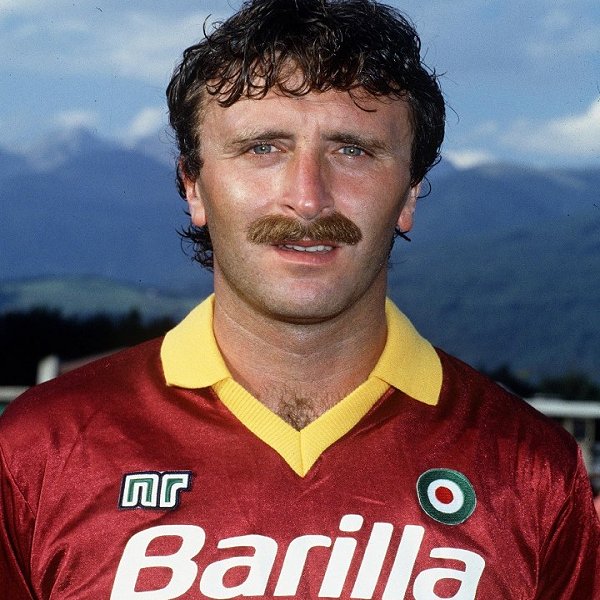
Roberto Pruzzo at Roma in 1986.
Photo: Wikimedia Commons
No.11 Christian Vieri
Christian Vieri was one of the world's greatest strikers of the late 1990s and 2000s, a classic number nine who scored wherever he played, and considering how many transfers he had, that meant a lot of goals during his 18 year career. Vieri's raw power, coupled with pace and a really strong left foot shot, would see him aptly nicknamed il Toro (the Bull), and this bustling style and strength made him a real handful for defenders. He was great in the air too, and would finish his career as the all-time top scorer of headed goals in Serie A history.
Whilst the majority of Vieri's career would be spent in Italy, he did have a single season in La Liga, and what a cracker it was, scoring 24 league goals in 24 games for Atlético Madrid and winning the Pichichi Trophy as La Liga's top goal scorer. This put him in a select group of players to have won both the Pichichi Trophy and Capocannoniere award during their careers.
See also: Christian Vieri profile
No.12 Silvio Piola
One of football's greatest strikers of the 1930s to 1950s, Silvio Piola remains the highest scorer in Serie A history, having set the record of 274 goals when he finally retired with Novara in 1954, aged 41. His goals had come with Pro Vercelli (his local club and whose youth setup he'd been in), Lazio, Torino, Juventus and Novara, and he's the top Serie A goalscorer with three of those teams (Pro Vercelli, Lazio and Novara) - a stat that no other player has achieved.
Piola's 30 goals for the Italian national team puts him third on the all-time goalscoring chart of the Azzurri, an incredible stat considering that he only played 34 times for them.
See also: Silvio Piola profile
No.13 Giampiero Boniperti
One of the greatest Italian strikers of the post-World War II period, Giampiero Boniperti was a one-club man with Juventus legend and is a Bianconeri legend.
Boniperti first made a name for himself as a striker, his great technique, eye for a goal with both feet, and ability in the air made him a prolific goalscorer. He formed fine partnerships with a trio of Danes: Karl Aage Præst, John and Karl Aage Hansen. His great technique would allow him to drop into a deeper role later in his career, and his assists would help create another famous partnership with John Charles and Omar Sívori, which was nicknamed "Le Trio Magico" (the Magic Trio).
Boniperti was the highest goalscorer in Juventus history for more than 40 years, his record of 178 goals finally being beaten by Alessandro Del Piero in 2006. During his 15 seasons with the club he won five Italy Serie A titles, two Coppa Italia winners medals and a Capocannoniere Award in 1948 for his 27 goals that season.
See also: Giampiero Boniperti profile
No.14 Roberto Boninsegna
One of the greatest Italian forwards of the latest 1960s and 1970s, Roberto Boninsegna is best known for his spells with Cagliari, Inter and Juventus. Whilst he was mainly renowned for his fantastic heading ability, Boninsegna had plenty of other attributes that made him one of the country's leading attacking talents - a bit of pace and power, great natural finishing and intelligent penalty box play, all made him a real handful for defenders to play against. Having played in Serie B with Prato and Potenza, Boninsegna made the step up to Italy Serie A with Varese in 1965 before transferring to Cagliari for three seasons. It was with the Sardinian club that he really came to prominence, forming a fine partnership with legendary Cagliari striker Luigi Riva that would see them challenging for the Scudetto but narrowly miss out, finishing runners-up in 1969.
His success at Cagliari lead to a big-money transfer back to mainland as Inter forked out 600 million Lira for him in the summer of 1969. Two years later and it would look to be money well spent as Boninsegna formed a great understanding with Inter legend Sandro Mazzola and topped the Serie A goalscoring charts as Inter won the Serie A title. In his seven years at the San Siro he'd go on to become the 2nd highest scorer in the history of the club, his 171 goals putting him behind club legend Giuseppe Meazza and only subsequently being surpassed by Alessandro Altobelli.
When he left the San Siro as a 32 year old in 1976, many thought that his best days were behind him, but he enjoyed an unexpectedly glorious swansong at Cagliari after the two clubs agreed a swap deal with another great Italian striker of the era, Pietro Anastasi. Forming a great strike partnership with Roberto Bettega, his three seasons at the Stadio Comunale would yield two Serie A titles, a UEFA Cup, and a Coppa Italia. His time at Juventus would also bring about an end to one of the great defender-striker rivalries of Serie A, as Boninsegna became a teammate of Francesco Morini, who he'd previously enjoyed a famous rivalry with.
For the national team, Boninsegna was a key part of the 1970 team that finished runners-up in Mexico to that fabulous Brazilian side. Boninsegna scored and assisted in the incredible semi-final victory over West Germany, scored Italy's only goal in the final, and was also part of the controversial substitution in the final minutes as he was the player to make way for Gianni Rivera's six minute cameo appearance.
See also: Roberto Boninsegna profile
No.15 Pietro Anastasi
A symbol of Juventus and a huge bianconeri fan-favourite during his eight seasons with the Turin giants in the late 1960s and 1970s. It was Anastasi's energetic style that really endeared him to the fans - he had a small, robust physique, but was blessed with a great turn of speed and mobility. These attributes were coupled up with a fantastic work ethic and a genuine desire to play for the team which would see him chasing down lost causes and harrowing defenders - the sort of things that supporters love to see and create a special bond between player and fans.
Whilst Anastasi was classed a striker, he had quite a unique style for the era, so whilst most traditional number nines would play with their back to goal or be happy doing the majority of their work in the penalty area, Anastasi had an unpredictability about his game that would see him manoeuvre himself into all sorts of positions across the attacking line, even dropping into an attacking midfield role at times. So, despite John Charles being his big hero growing up, Anastasi played more like a modern day false nine.
Anastasi would end his Juventus career with three Italy Serie A titles and a Coppa Italia winners medal, whilst he was also a European Championship winner in 1968, scoring the second goal in the final replay against Yugoslavia.
See also: Pietro Anastasi profile
No.16 Francesco Graziani
One of the greatest Italian strikers of the 1970s and 1980s, "Ciccio" Graziani is a legend of Torino, his goals and his partnership with Paolo Pulici helping to fire "Il Toro" to their last Italy Serie A title in 1976. It would become one of the most prolific strike partnerships of the 1970s, Paolo Pulici ending up as the Serie A top-scorer three times, whilst Graziani topped the charts in 1976.
After eight years with Torino Graziani moved on to Fiorentina and then a successful three year spell with Roma, before finally calling time on his Serie A career with Udinese in 1988.
At national level, Graziani was also an important player for Italy. Whilst other more glamorous players may have made the headlines and taken the glory, Graziani just quietly went about his business for the Azzurri, his 23 goals in 64 appearances between 1975 and 1983 still make him the ninth-highest all-time scorer for the Italian national team. He was also an ever-present in the Azzurri team that won the 1982 World Cup, although he was unfortunate in the final as he had to be substituted after only seven minutes following a shoulder injury following a collision with the West German midfielder Wolfgang Dremmler.
See also: Francesco Graziani profile
Tweet
